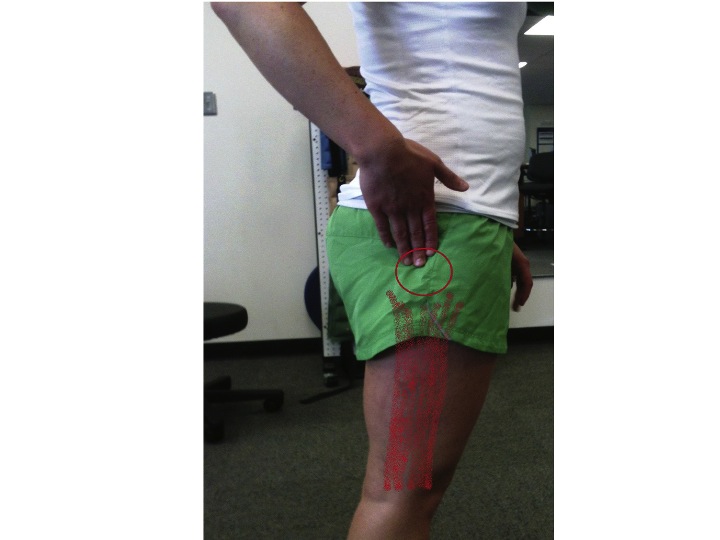Patients with outer hip, lateral, pain have previously been diagnosed with trochanteric bursitis indicating the fluid filled sack between our hip muscle tendons and our thigh bone is to blame for their symptoms. In addition the -itis ending in the diagnosis leads us to believe there is an inflammatory process taking place in the hip. Interventions designed to combat inflammation where previously utilized in an attempt to reduce pain and improve function. Based on the recent research experts have moved toward a more accurate diagnoses for symptoms in the lateral hip which is changing our understanding of the pathology and treatment interventions for this common condition.
Experts are currently moving away from the diagnosis bursitis due to the lack of confirming findings on diagnostic imaging. Bird et al. reported only 8% of patients with lateral hip pain had bursitis on ultrasound imaging (Arthritis and Rheum. 2001). A recent study by Long et al. found 80% of close to 800 patients with lateral hip pain did not show any signs of bursitis. Conversely these imaging studies, including MRI, are finding more chronic, degenerative (scar tissue) changes in the tendons on the gluteus medius and minimus tendons as well as the IT band. These changes explain the limitations of interventions designed to treat inflammation in these patients.
The diagnosis Greater Trochanteric Pain Syndrome (GTPS) is now being utilized to more accurately describe these chronic changes among patients with lateral hip pain. GTPS accounts for a small amount of sports injuries but has its’ highest incidence among individuals aged 40-60 years old (Mulligan et al. 2014). In our Physical Therapy practice we commonly see this condition among individuals with a prior history of low back pain and IT band pain. These patients often demonstrate weakness in their hip musculature leading to muscle imbalances across the lower quarter. The degenerative changes in the tendon represent a decrease in the tendon’s ability to tolerate loading in movement and athletic events. Interventions should focus on correcting hip muscle imbalances and poor movement patterns which perpetuate this condition. When appropriate, progressive resistance exercises should be implemented to improve these tissues’ ability to tolerate stress and help remodel the tendon.
To learn more about how to accurately diagnose and treat your lateral hip pain contact your local Boulder Physical Therapists at Mend.

